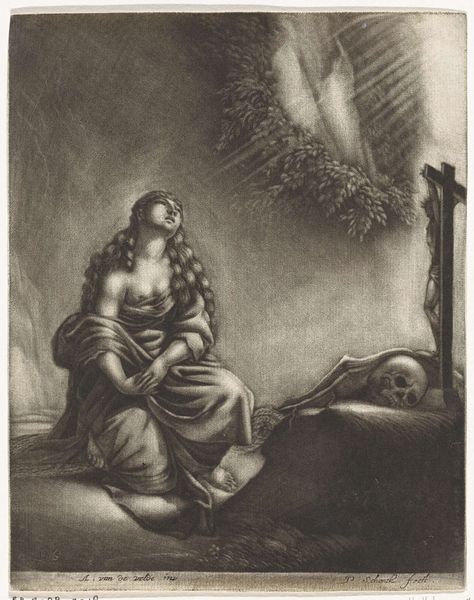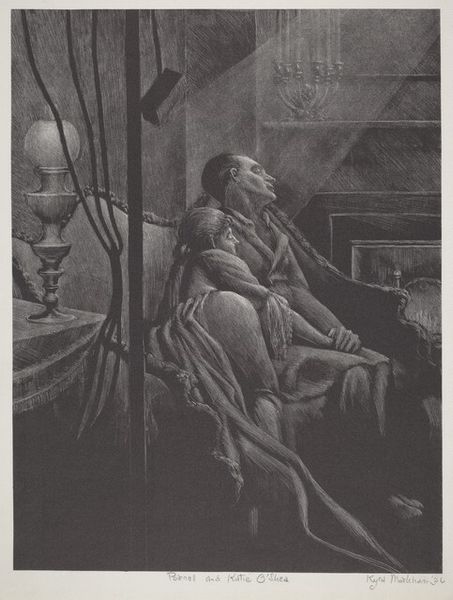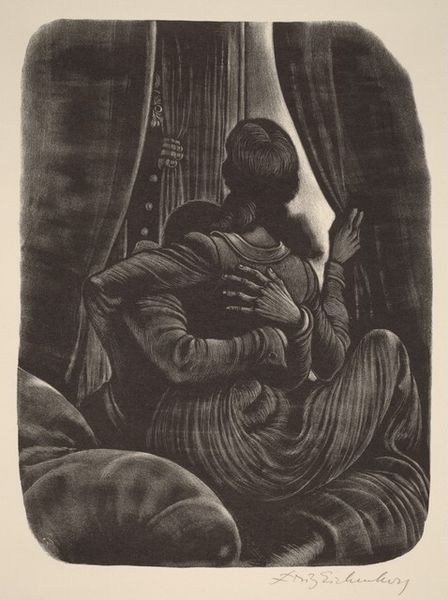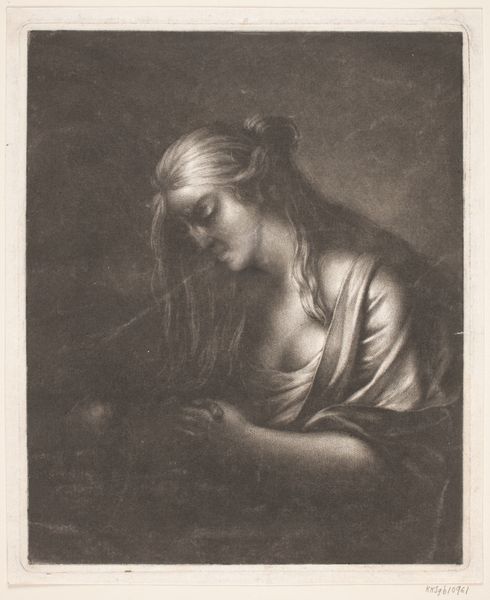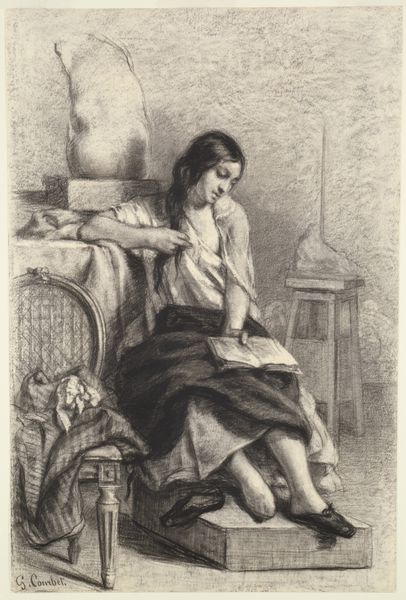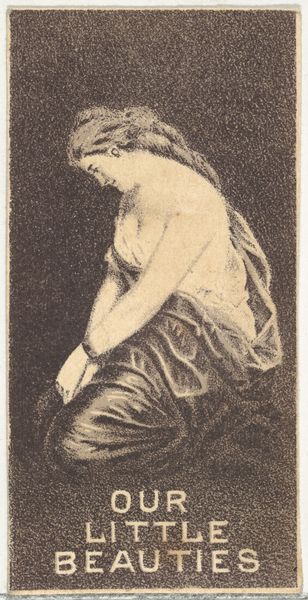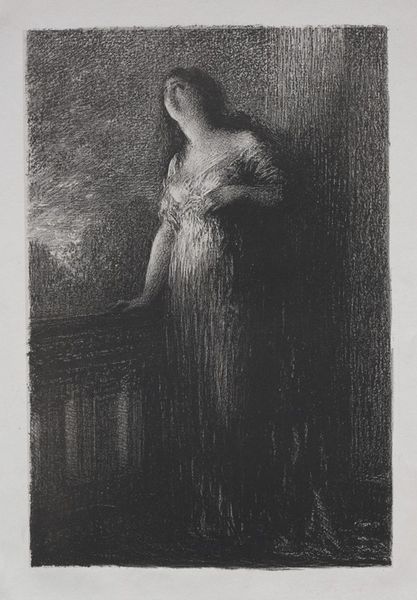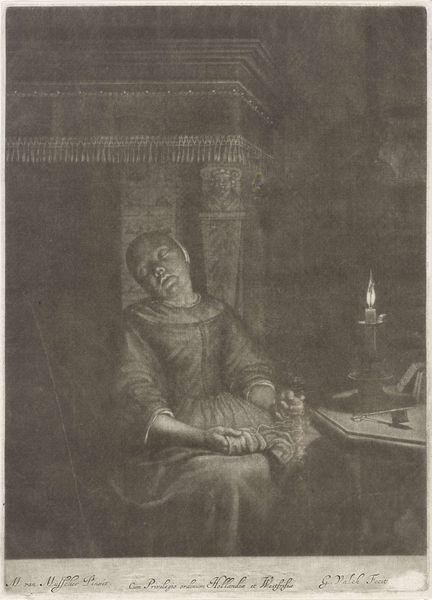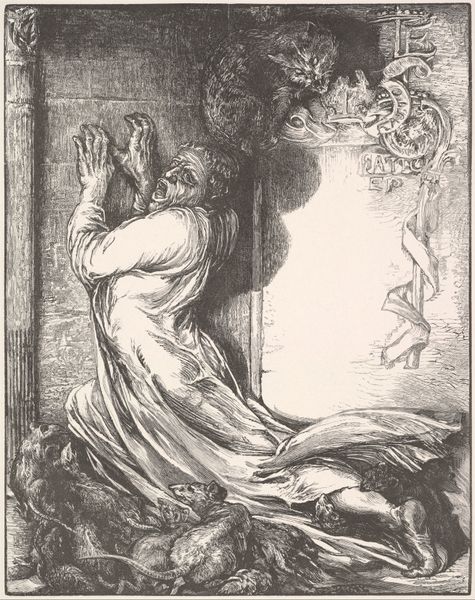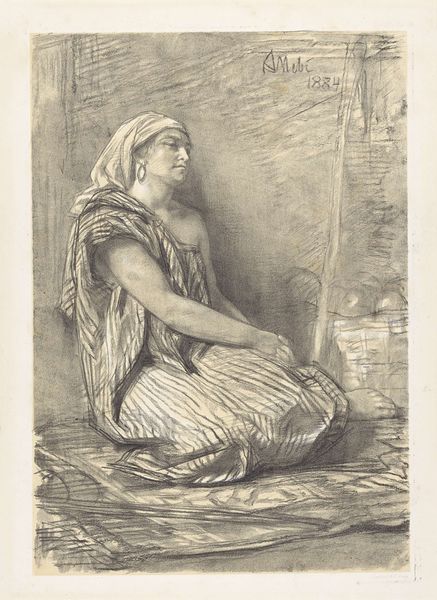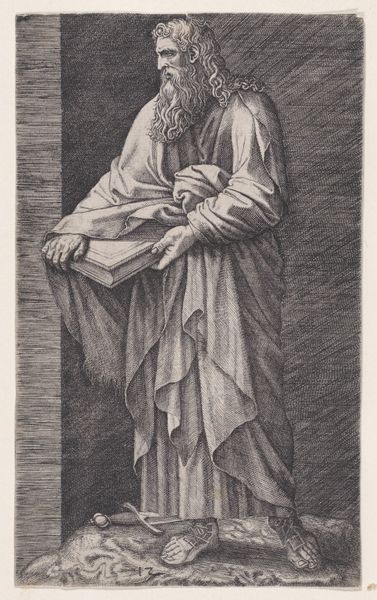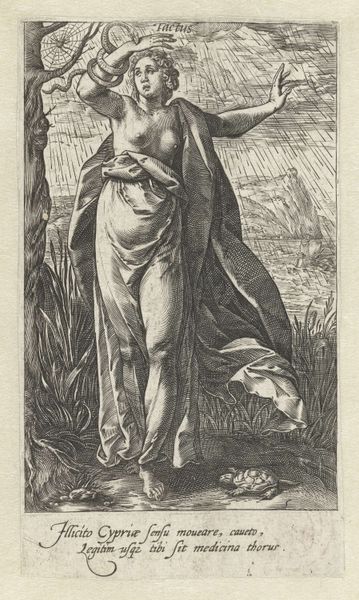
engraving
#
baroque
#
genre-painting
#
nude
#
engraving
Dimensions: height 219 mm, width 175 mm
Copyright: Rijks Museum: Open Domain
Curator: Here we have an engraving titled "Zich vlooiende vrouw," dating roughly from 1667 to 1718, by Jan (I) Griffier. The title translates to "Woman Catching Fleas." Editor: It's so dark! Almost oppressive. The contrast between the lit candle and the deep shadows makes it feel quite intimate, despite the woman's somewhat vulnerable state. And those textures—you can almost feel the coarse fabric of her dress. Curator: The darkness is indeed key. It speaks to a shift in genre painting at the time, towards depicting scenes of everyday life, but often with an element of voyeurism, creating a certain distance from the viewer. Notice how her intimate act is put on display, both for us and within a public collection. Editor: Exactly, I'm interested in how that darkness emphasizes the materiality. You can almost trace the engraver’s labor; each tiny mark seems deliberate. Think of the materials: the copperplate, the ink, the paper – all combined to reproduce this private moment, shifting it into a commodity, accessible to many. Curator: It's fascinating how Griffier uses the genre to explore the intersection of private and public spheres. How do you think this imagery shaped public perceptions of women and their place in society at that time? Were they complicit in the consumption of such images, or were they excluded from it entirely? Editor: I find it provocative. The 'fleas' are likely not merely literal parasites; they’re symbolic of the anxieties and daily struggles of a woman in her domestic sphere. I'd imagine a different, perhaps gendered relationship between producers, subjects and consumers. The labor and production contexts that created such images matter greatly. Curator: It truly brings up so many complex and unsettling issues about art production, voyeurism and the historical perception of gendered social classes in this period. Editor: Indeed, an artwork offering us a tactile, but still fragmented insight into the conditions of making art and an unsettling window onto social structures of that moment in time.
Comments
No comments
Be the first to comment and join the conversation on the ultimate creative platform.
